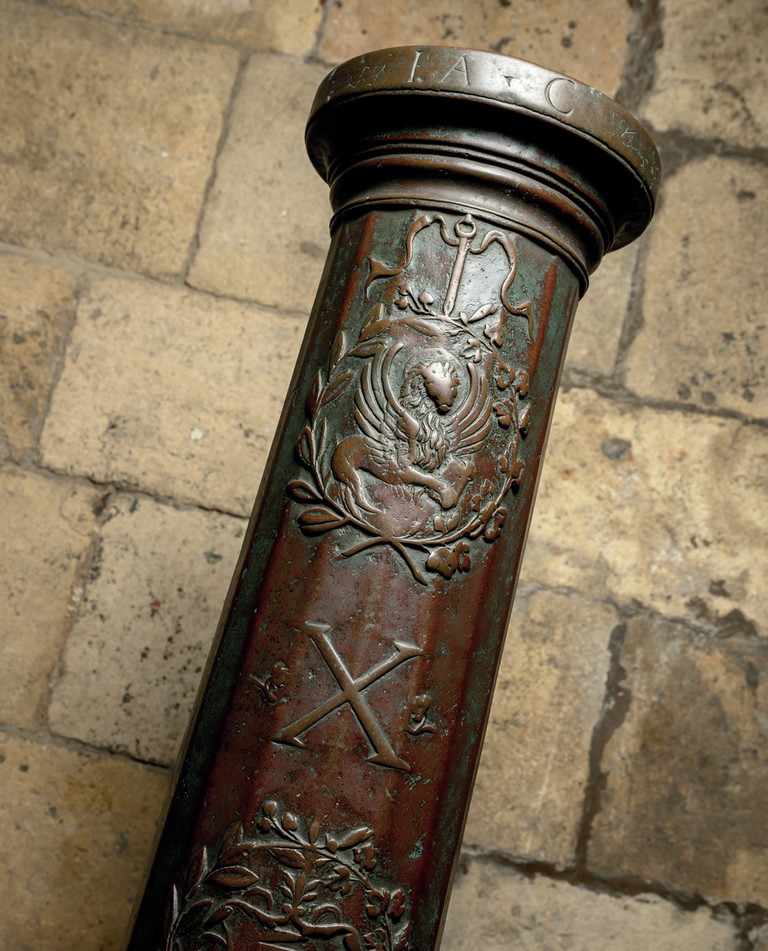
A Cannon With A Turbulent History
A Cannon With A Turbulent History
To the northwest of Malta, Tunis is strategically placed commanding the straits leading to the Western Mediterranean. With a rich hinterland, the city has been thriving since the days of Carthage. Her history is as tumultuous as any. In the 1750s, the reigning bey of the regency, a vassal of the sultan in Istanbul, was a friend to Grand Master Pinto, regardless of the religious animosity between the two. The bey had provided food, especially beef to hunger-stricken Malta in its hour of need. During the year 1756, this unusual ally of Malta lost favour with his Algerian neighbours. Within days, an army was marching against the city of Tunis and in an effort to help an old friend, Grand Master Pinto dispatched the religion’s fleet in aid of the city. Initially, the expedition was met with success, surprising the besiegers, not allowing any Algerian Xebec to enter the gulf of Tunis. However, it soon became clear that the bey, who was considered a usurper, was losing the war. Several requests by the captain general of the fleet of Order to release the Christian slaves to gain strength in numbers were refused diplomatically. The support for the usurper dwindled daily and soon the situation was untenable. Seeing that the city was about to fall, the fleet of the Order undertook an operation worthy of a Hollywood movie.
Under the cover of darkness, the galleys in battle order rowed forward within range of the shore batteries, engaging in a stout exchange. The galley tenders in accordance with a preconceived plan were armed with boarding parties led by a number of knights. Stealthily, the small craft entered the inner harbour and boarded the ships of the Tunisian fleet laying at anchor. Once commandeered, the ships slipped out of the inner harbour under a heavy fire from the bastions of Tunis. The mission was a resounding success. The prizes were brought back to Malta triumphantly: a vascello, two tartanas and three corsair pinks, along with twelve liberated Maltese slaves. The ships were escorted back to grand harbour under the command of Fra Fleury. In one clean sweep, the Order had captured the whole Tunisian fleet, a truly remarkable feat of valour and seamanship.
A somewhat mysterious cannon at the Malta Maritime Museum is possibly linked to this episode. The cannon in question, a sacre, is of Venetian manufacture. It is the oldest bronze cannon in the museum. Stylistical,ly the cannon dates to around 1510. Venice then had two affluent Venetian families of bronze founders, the Alberghetti and the di Conti. Each had a number of master founders who signed their works either in their full name and surname, in their first name initial and surname or in various abbreviations of their name and surname.
The cannon in question is signed Io. C. (Iocobo Conti) on the muzzle. The Lion of St. Mark and the Council of Ten Mark (a large X) are found close to the muzzle on the chase. The cannon could wellhave seen service in the epic battle of Lepanto of 1571. Yet the history of this cannon is mired in mystery and an inscription commemorating its donation by Grand Master Pinto is engraved on the chase close to the first reinforce ring dated MDCCLVI (1756). Could this date have been inscribed on the barrel after the 1756 incident? Was this gun found on one of the captured Tunisian ships? Was the benevolent grand master the donor of this cannon after it was presented to him, something that was done frequently by victorious admirals?

In the Muslim world, Christian cannons were often reused and kept as symbols of victory. One can simply look to the description of the bronze cannon found on board the Corona Ottoman in 1760. Whatever the case, the Tunis episode of 1756 gives us a possible provenance for one of the oldest artillery pieces on the island.
It seems that the cannon was considered too old to be pressed into service after the events of 1798 -1800. Eventually, the cannon ended up in England early in the 19th century because of its antiquity, only to return in 1888. Until 2007, this cannon stood on the steps of Auberge de Castille at Valletta. Few knew its historical relevance. It was even tumbled down the Castille steps in a political protest in 1988. Its latest journey to Vittoriosa at the Maritime Museum renders it justice and historic appreciation in a place where over two hundred years earlier it was stored or pressed into service on galleys moored close by.